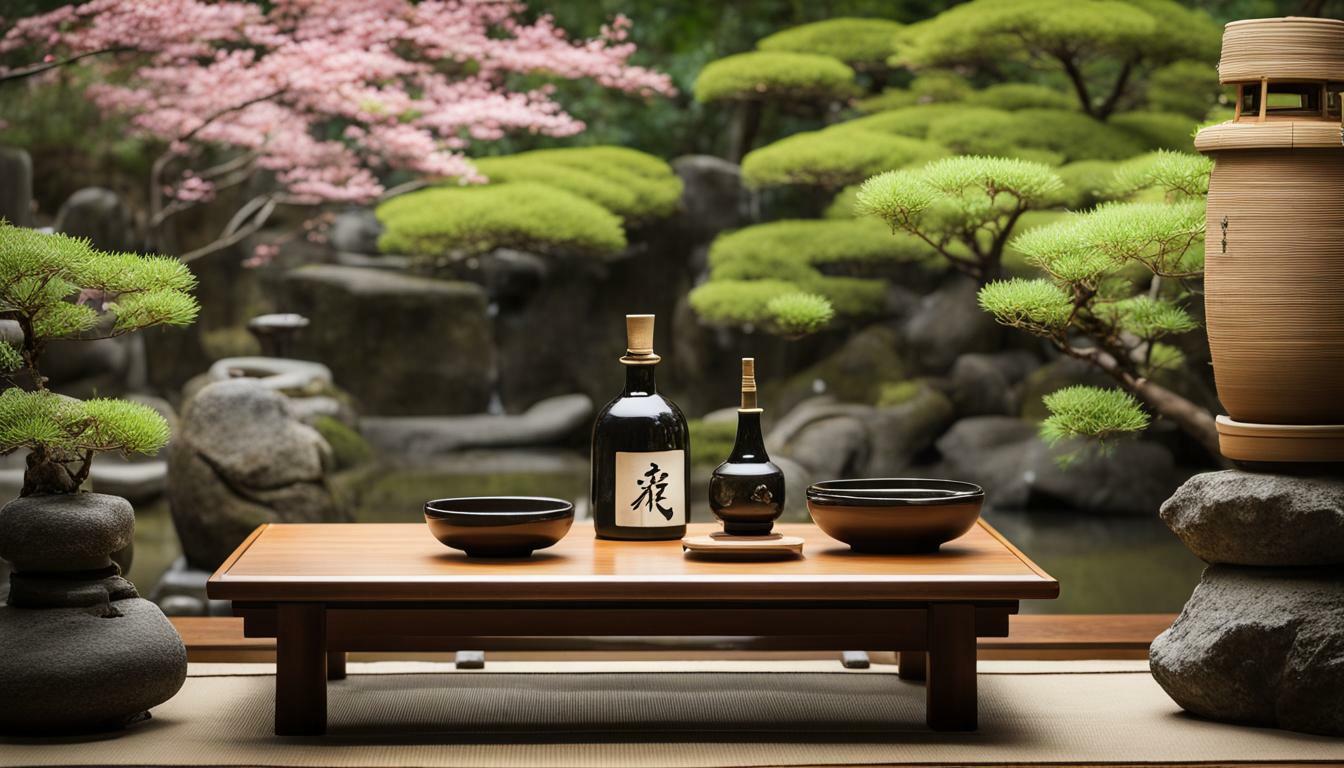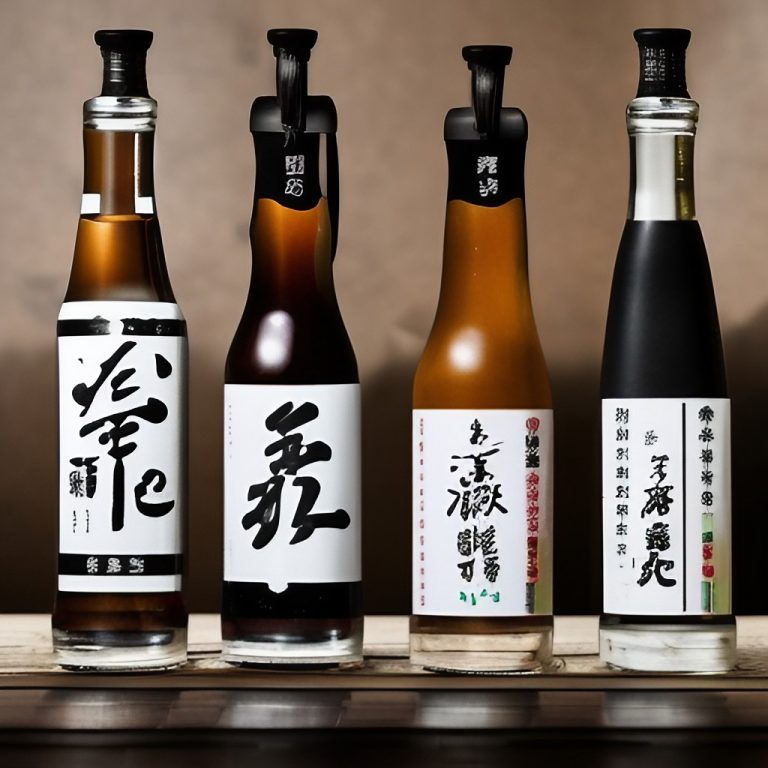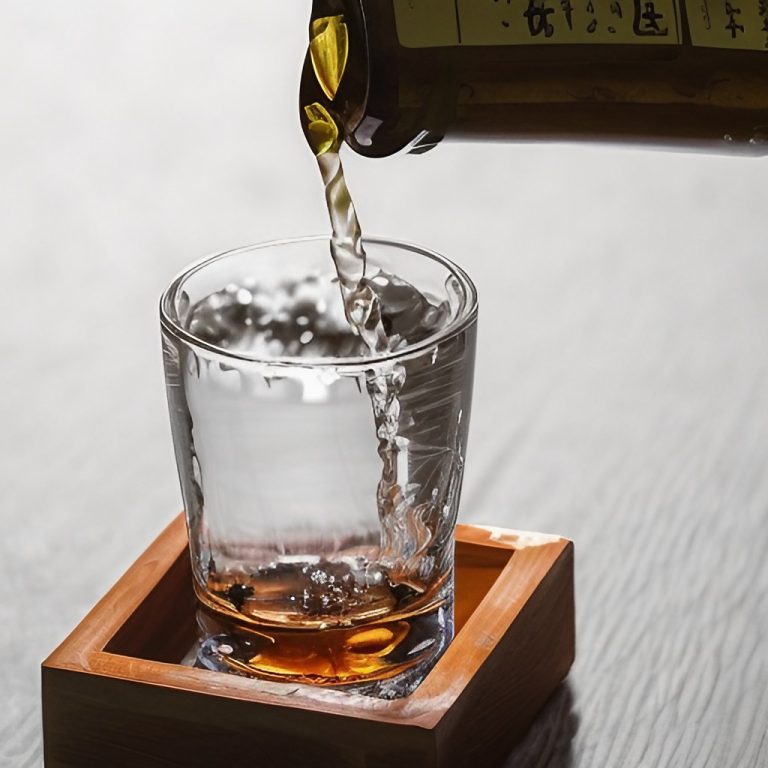Explore Various Sake Tiers: A Guide to Japanese Rice Wine
Welcome to our guide exploring the world of sake tiers. Sake is a Japanese rice wine that has gained popularity around the world, and understanding the different quality grades or tiers is essential to appreciating and enjoying this unique beverage.
In this article, we’ll take a closer look at sake quality grades, explore the various tiers of sake, and provide tips for tasting and pairing this delicious beverage. Whether you’re a seasoned sake enthusiast or a curious newcomer, this guide will help you navigate the world of Japanese rice wine.
Key Takeaways:
- Sake is a Japanese rice wine that comes in different quality grades or tiers, ranging from basic to premium.
- The classification and grading system for sake is based on specific criteria that evaluate factors such as rice milling, brewing methods, and flavor profiles.
- Understanding sake tiers is essential to appreciating the nuances of flavors and quality associated with different types of sake.
Understanding Sake Quality Grades
When it comes to Japanese rice wine, quality is paramount. Sake quality grades are used to classify sake based on specific criteria, such as the rice used, the milling process, and the brewing method. These grades are a critical factor in determining the overall flavor, aroma, and texture of the sake.
The sake classification system is divided into two main categories: tokutei meishoshu, which includes sake that meets specific production criteria, and futsushu, which includes all other types of sake. Within tokutei meishoshu, there are several subcategories that indicate the specific quality grade of the sake. The highest quality sake is known as daiginjo, followed by ginjo, junmai daiginjo, junmai ginjo, junmai, and honjozo.
Sake quality grades are determined by the percentage of rice that has been polished away, with higher grades requiring more extensive milling. For example, daiginjo must be made from rice that has been polished to at least 50% of its original size, while honjozo must be made from rice that has been polished to at least 70% of its original size. The brewing process and other factors, such as the yeast strain used, also play a role in determining the final quality grade of the sake.
Exploring Sake Tiers
Now that we understand the different quality grades used to classify sake, let’s explore the various tiers or levels of sake. Sake is typically categorized into six tiers, ranging from basic to super-premium. These tiers are determined based on the polishing ratio of the rice grains used in the brewing process as well as the overall quality of the sake.
| Sake Tier | Polishing Ratio | Characteristics |
|---|---|---|
| Junmai-shu | 70% or less | Full-bodied, rich flavor |
| Honjozo-shu | 70% or less | Lighter-bodied, crisp flavor |
| Ginjo-shu | 60% or less | Complex, fruity flavor |
| Daiginjo-shu | 50% or less | Refined, delicate flavor |
| Junmai ginjo-shu | 60% or less | Full-bodied with fruity notes |
| Junmai daiginjo-shu | 50% or less | Full-bodied and complex with a clean finish |
Junmai-shu and honjozo-shu are considered the basic tiers, while ginjo-shu and daiginjo-shu are classified as premium. Junmai ginjo-shu and junmai daiginjo-shu are a combination of the basic and premium tiers. Generally, the higher the polishing ratio, the more refined and delicate the flavor of the sake.
It’s important to note that the categorization of sake into different tiers is not a hard and fast rule. Some brewers may produce sake outside of these classifications, and there may be variations in quality even within the same tier. However, understanding the different tiers can be a useful starting point for exploring the world of sake and identifying the types of sake that appeal to your palate.
Sake Quality Levels Demystified
Understanding the quality levels of sake can be daunting, but it’s essential for choosing a sake that suits your palate. Quality is determined by several factors, including the rice polishing rate, water source, yeast strain, and brewing method.
To evaluate sake, tasters use a scale of -15 to +15, with 0 representing a neutral flavor. A sake with a higher score is considered more complex and flavorful, while a lower score indicates a simpler, smoother taste.
Sake is categorized into four quality levels – Futsuu-shu, Tokutei Meishou-shu, Tokutei Meishou-shu Koshu, and Junmai Daiginjo-shu – based on the rice polishing rate and other factors. Futsuu-shu is the most basic level, while Junmai Daiginjo-shu is the highest quality tier.
Junmai and Honjozo, two types of sake that differ in the amount of added alcohol, are not necessarily indicative of quality but are rather a preference in flavor profile. Junmai is known for a more full-bodied flavor, while Honjozo is lighter and more fragrant.
To truly appreciate the nuances of sake quality, it’s essential to taste a variety of different grades and types. Next time you’re selecting sake, pay attention to the rice polishing rate and other factors that contribute to the quality. You’ll soon discover your own palate preferences when it comes to the delicate, nuanced world of Japanese rice wine.
Types of Sake and Their Quality
When it comes to sake, understanding the different types can help you choose the perfect one to suit your taste preferences. There are several sake types, each with its own unique brewing process and flavor profile.
Junmai: This type of sake is made with only rice, water, yeast, and koji, and does not contain any added alcohol. Junmai sake is known for its full-bodied flavor and rich aroma, making it a popular choice for pairing with hearty dishes.
Ginjo: Ginjo sake is brewed with rice that has been polished to at least 60% of its original size. This creates a delicate and fruity flavor profile, with a light and smooth finish. Ginjo sake pairs well with sushi and other seafood dishes.
Daiginjo: Daiginjo sake is made from rice that has been polished to at least 50% of its original size. This results in a complex and refined flavor profile, with a fragrant aroma and a smooth, silky texture. Daiginjo sake is best enjoyed on its own or paired with light dishes such as salads and appetizers.
Nigori: Nigori sake is unfiltered, resulting in a cloudy appearance and a sweet, creamy flavor profile. These unfiltered sake pairs well with spicy and savory dishes, as well as desserts.
Ginjo: Ginjo sake is made with rice that has been milled to at least 40% of its original size. This type of sake is complex and fragrant, with a fruity flavor. It pairs well with grilled dishes and rich flavor profiles.
Daiginjo: Daiginjo sake is made with rice that has been milled to at least 30% of its original size. This type of sake is the highest quality, with a delicate and complex flavor. It pairs well with sushi and other light dishes.
Overall, the type of sake you choose will have a significant impact on its quality and flavor. Understanding the differences between each type can help you make an informed decision when exploring the world of sake.
Premium Sake Tiers
For the true sake connoisseur, premium sake is the ultimate indulgence. These high-end offerings are crafted to perfection using the finest ingredients and brewing techniques, resulting in a smooth and complex flavor profile that is unmatched by lower-tier sake.
The premium sake tiers are typically divided into two categories: Junmai Daiginjo and Daiginjo. Junmai Daiginjo is the highest of the high-end sake, made using only the finest and most polished rice grains. The brewing process takes longer and is more labor-intensive, resulting in a rich, layered flavor profile that is both sophisticated and refined.
Daiginjo sake is also crafted using high-quality rice grains that have been polished to a certain degree, but not quite as much as Junmai Daiginjo. This results in a slightly bolder flavor profile with a hint of richness and depth.
| Sake Tier | Description |
|---|---|
| Junmai Daiginjo | The highest grade of sake, made with the finest and most polished rice grains. |
| Daiginjo | High-end sake with a slightly less polished rice grain than Junmai Daiginjo, resulting in a bolder flavor profile. |
Premium sake is often served chilled to bring out its subtle flavors, and pairs well with seafood, sushi, and other delicate dishes. To fully appreciate the depth and complexity of premium sake, it’s important to sip and savor slowly, allowing the flavors to develop on the palate.
While premium sake can be pricey, it’s a worthwhile investment for those who appreciate the artistry and craftsmanship that goes into creating the perfect bottle. Some of the most esteemed premium sake brewers can be found in regions such as Niigata, Kyoto, and Hiroshima.
If you’re looking to explore the pinnacle of sake quality, investing in a bottle of Junmai Daiginjo or Daiginjo is the way to go. The unique taste profiles and refined craftsmanship make these offerings truly special, and a must-try for any sake enthusiast.
Affordable Sake Tiers
Now that we’ve explored the different levels of sake quality, let’s take a closer look at some budget-friendly options that still offer enjoyable flavors and quality.
Sake in the affordable tiers can still be delicious and satisfying, even if it doesn’t come with the same prestige as the premium options. Look for sake labeled as “futsū-shu,” which is the most basic and economical type of sake. It typically has a lower alcohol content and a simpler taste profile, but can still be a great option for everyday drinking.
| Brand | Sake Type | Price Range |
|---|---|---|
| Gekkeikan | Futsū-shu | $5-$10 |
| Kikusui | Futsū-shu | $12-$18 |
| Nanbu Bijin | Futsū-shu | $20-$25 |
Another option is “honjozo,” which is a higher quality than futsū-shu and still reasonably priced. Honjozo sake is made with added alcohol, which creates a crisper taste and light aroma. It’s often paired with salty or savory foods and is a great choice for izakaya-style dining.
When choosing an affordable sake, keep in mind that freshness is key. Look for sake with a production date or date of bottling to ensure maximum flavor and quality.
Don’t be intimidated by the higher tiers of sake. With a little exploration and experimentation, you can find an affordable option that suits your taste and budget.
Sake Tasting and Pairing Tips
Now that we have explored the various sake tiers and their quality levels, it’s time to learn how to appreciate and enjoy the flavors of Japanese rice wine. Sake tasting is a delightful experience, as each tier offers unique aromas and notes that can only be fully appreciated by sipping and savoring.
When it comes to tasting sake, it’s best to start with the basic tiers and work your way up to premium levels. This way, you can gradually develop your palate and appreciate the subtle differences in flavor profiles. It’s also recommended to try sake at different temperatures to experience the range of tastes and textures it can offer.
Pro Tip: When tasting, be sure to take small sips and swirl the sake in your mouth to fully experience the flavors and aromas.
Now, let’s talk about sake pairing. Like wine, sake can enhance the flavors of certain foods and vice versa. However, it’s important to note that not all sakes pair well with all dishes. Bold, rich sakes pair well with savory dishes, while lighter sakes are better suited for seafood and vegetables.
When in doubt, stick with simple and classic pairings. Sake pairs well with sushi, sashimi, and other Japanese cuisine. Additionally, sake can complement other Asian flavors, such as Thai and Vietnamese dishes.
Overall, the key to sake pairing is to experiment and find what works best for your personal taste preferences. With so many different tiers and quality levels available, there is a sake out there for every dish and every occasion.
Sake Trends and Innovations
As sake continues to gain popularity across the world, the industry is undergoing a wave of exciting trends and innovations. From new brewing techniques to unique flavor profiles, here are some of the latest developments in the world of sake:
Focus on Local Ingredients
One ongoing trend in sake production is a renewed focus on locally-sourced ingredients. Many sake breweries are now using rice, water, and yeast strains that are indigenous to their respective regions, resulting in more unique and distinct flavor profiles. This approach also highlights the importance of supporting local farmers and promoting sustainability in the industry.
Emerging Producers
While the majority of sake is still produced in Japan, other countries such as the United States, Canada, and Australia are starting to make their own versions of the Japanese rice wine. This has led to the emergence of new producers and brewing techniques, creating a more diverse and global landscape for sake.
Artisanal Sake
Just as craft beer and small-batch spirits have gained popularity in recent years, artisanal sake is also on the rise. Many breweries are experimenting with unique flavor combinations and aging methods, resulting in more complex and refined sake. This trend also promotes the appreciation of sake as a craft beverage, not just a traditional Japanese drink.
Innovative Serving Methods
While sake is traditionally served hot or cold, there is a growing trend towards innovative serving methods that enhance the drinking experience. From carbonated sake to sake cocktails, there are now more ways than ever to enjoy the unique flavors of Japanese rice wine.
Sake Education
As sake continues to gain popularity outside of Japan, there is a growing need for education and awareness about the different types and quality levels of sake. This has led to the creation of sake sommelier courses and educational events, as well as an increased focus on providing more information to consumers about the brewing process and flavor profiles.
With all these exciting trends and innovations, it’s an exciting time to be a sake enthusiast. We can’t wait to see what the future holds for this beloved Japanese beverage!
The Global Impact of Sake Tiers
It’s no secret that Japanese sake has gained popularity around the world in recent years. However, many people may not be aware of the intricate classification system that exists within the industry. Sake quality grades and tiers are essential components of the sake-making process, and they have played a significant role in shaping the global perception and consumption of Japanese rice wine.
The classification system for sake is based on factors such as the rice polishing ratio, brewing process, and quality of water used in production. These elements are evaluated and assigned a grade, ranging from the lowest-level futsushu to the highest-quality daiginjo. The specific classification of sake impacts not only its flavor profile but also its price and prestige.
The impact of sake tiers extends far beyond Japan. As the popularity of sake has grown globally, so too has the appreciation for its quality and artisanship. Sake competitions, festivals, and tastings now take place around the world, showcasing the wide range of styles and tastes available. Consumers are now able to compare and contrast sake from different regions and quality levels, leading to a more educated and discerning audience.
Moreover, the classification system has had a profound impact on the economy of Japan. The production and export of premium sake have become a significant source of income for many Japanese breweries and small businesses. The prestige associated with high-quality sake has helped create a market for luxury and specialty products, further supporting the industry’s growth.
In conclusion, the sake classification system and tiers have played a vital role in shaping the global perception and consumption of Japanese rice wine. As appreciation for the quality and artisanship of sake continues to grow, so too does the importance of understanding the different levels and grades available. Whether you are a sake connoisseur or a curious beginner, exploring the various tiers of sake will provide a deeper appreciation for the rich culture and history of Japan’s beloved rice wine.
Conclusion
As we come to the end of our guide to sake tiers, we hope you have gained a deeper understanding of the world of Japanese rice wine. By exploring the different quality grades, tiers, and types of sake, you can discover the unique flavor profiles and characteristics that make each variety so special.
Remember, sake is more than just a beverage – it is a cultural experience that has been perfected over hundreds of years. By appreciating the different tiers of sake and understanding the complexities of the brewing process, you can enjoy a more enriching and fulfilling drinking experience.
Whether you are a sake aficionado or a newcomer to the world of Japanese rice wine, there is always something new and exciting to discover. So, raise a glass and toast to the wonderful world of sake – kanpai! Learn what are the best sake.





